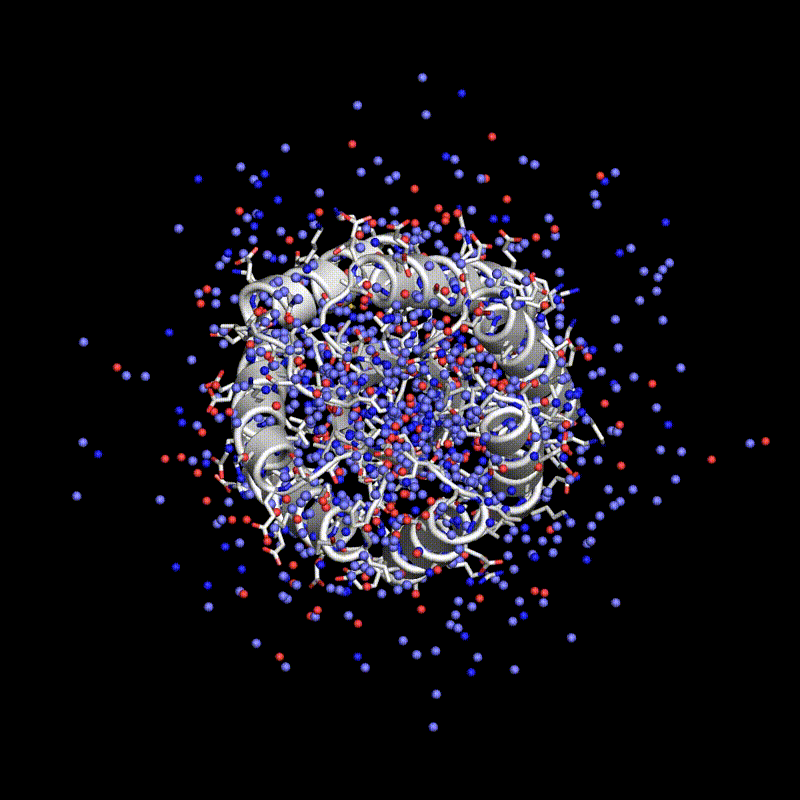Stanford Researchers Introduce Protpardelle: A Breakthrough All-Atom Diffusion Model for Co-Designing Protein Structure and Sequence
In a remarkable stride forward for protein design, a team of researchers has unveiled Protpardelle, an all-atom diffusion model that addresses the intricate interplay between continuous and discrete protein structures. The model achieves a groundbreaking feat by generating proteins of exceptional quality, diversity, and novelty, transcending conventional boundaries in the field.
Proteins are the linchpins of biological functionality, orchestrating various vital processes through precise chemical interactions. The challenge lies in accurately modeling these interactions, predominantly governed by sidechains, to enable effective protein design. Protpardelle leverages a unique “superposition” technique that encompasses various potential sidechain states, subsequently collapsing them to initiate reverse diffusion for sample generation.
By synergizing with sequence design methods, Protpardelle pioneers the co-design of all-atom protein structures and sequences. The resulting proteins exhibit outstanding quality, gauged by widely accepted metrics assessing self-consistency. This metric predicts the structural conformation of a designed sequence and measures the accord between predicted and sampled structures. Protpardelle consistently attains success rates exceeding 90% for proteins of up to 300 residues, marking a remarkable leap in designability compared to existing methodologies. Moreover, it achieves this feat at a substantially reduced computational cost, underscoring its efficiency.
Diversity is a critical hallmark of generative models, safeguarding against mode collapse and broadening the spectrum of viable solutions. Protpardelle excels in this aspect, clustering samples to elucidate a rich landscape of structural diversity. Its proficiency in generating proteins with a wide range of alpha and beta-type structures attests to its versatility.
Crucially, Protpardelle is not bound by the constraints of the training dataset. It demonstrates a commendable ability to forge novel proteins distinct from those in its training set. This signifies its potential to revolutionize protein engineering by venturing into uncharted territory.
The all-atom model of Protpardelle unfurls its prowess in unconditional protein generation, particularly excelling in proteins of up to 150 residues. Here, it achieves a success rate of approximately 60% when assessed by structural similarity metrics. Visual examination of samples reveals a diverse array of protein folds, richly adorned with secondary structural elements.
Protpardelle meticulously maintains the chemical integrity of generated samples, aligning with the distribution of bond lengths and angles observed in natural proteins. The model deftly captures the main modes of the natural distribution of chi angles, offering a comprehensive portrayal of sidechain behavior.
The team’s network architecture, underpinning Protpardelle’s extraordinary capabilities, incorporates a U-ViT structure with strategically designed layers and attention heads. Noise conditioning plays a pivotal role in injecting crucial information into the training process. The model is meticulously trained on the CATH S40 dataset, a testament to the robustness of its foundation.
Protpardelle’s unique denoising step, a crucial facet of its sampling process, further solidifies its cutting-edge approach. This adapted algorithm adeptly navigates the intricacies of the protein generation process, fine-tuning parameters for optimal results.
The introduction of Protpardelle signifies a paradigm shift in protein design, unlocking doors to unprecedented possibilities in biotechnology and pharmaceuticals. It’s potential to revolutionize protein engineering by seamlessly marrying structure and sequence heralds a new era in the field. As researchers continue to explore its boundless capabilities, Protpardelle stands poised to reshape the landscape of protein design and engineering.
Check out the Paper, Demo, and Github. All Credit For This Research Goes To the Researchers on This Project. Also, don’t forget to join our 30k+ ML SubReddit, 40k+ Facebook Community, Discord Channel, and Email Newsletter, where we share the latest AI research news, cool AI projects, and more.
If you like our work, you will love our newsletter..

Niharika is a Technical consulting intern at Marktechpost. She is a third year undergraduate, currently pursuing her B.Tech from Indian Institute of Technology(IIT), Kharagpur. She is a highly enthusiastic individual with a keen interest in Machine learning, Data science and AI and an avid reader of the latest developments in these fields.
Credit: Source link


Comments are closed.